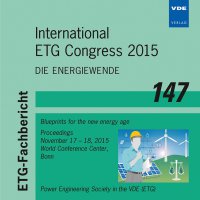Robust Switching States for an Application in Transmission System Operation
Conference: International ETG Congress 2015 - Die Energiewende - Blueprints for the new energy age
11/17/2015 - 11/18/2015 at Bonn, Germany
Proceedings: International ETG Congress 2015
Pages: 8Language: englishTyp: PDF
Personal VDE Members are entitled to a 10% discount on this title
Authors:
Moormann, Andreas (Forschungsgemeinschaft für elektrische Anlagen und Stromwirtschaft (FGH) e.V., Aachen, Germany)
Krahl, Simon; Moser, Albert (FGH e.V., Aachen, Germany)
Mika, Guenter (Austrian Power Grid AG, Vienna, Austria)
Abstract:
Low-cost corrective switching can be used to relieve line overloading or violations of voltage limits according to the (n-1) security principle. Due to several constraints, changing the switching state in real-time operation of transmission systems is done after comprehensive simulation of the required switching actions in the operational planning only. Hence, transmission system operators (TSOs) typically make use of recurrent and well-known switching actions. However, operational planning of transmission systems is subject to increasing uncertainties which have to be considered while determining optimized switching states. Furthermore, the system itself faces significant changes which make it difficult to benefit from the operators’ knowledge and experience of the system gathered in the past. As a consequence, a new method to compute so-called “robust switching states” (RSS) is developed. In the following, a detailed motivation is presented and the key features of RSS are explained. The fundamentals of the optimization method are presented and the benefit of RSS is shown based on an example.


